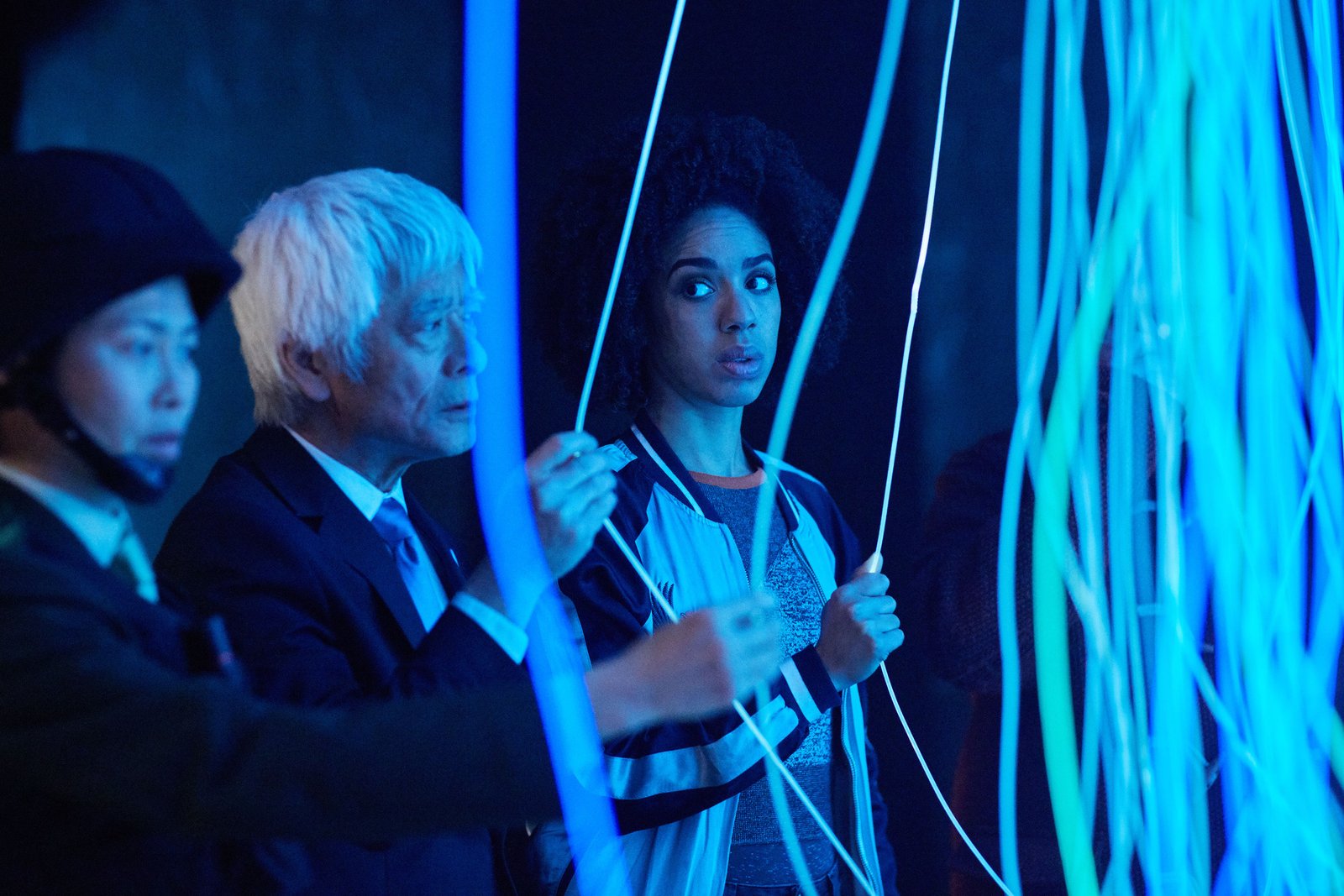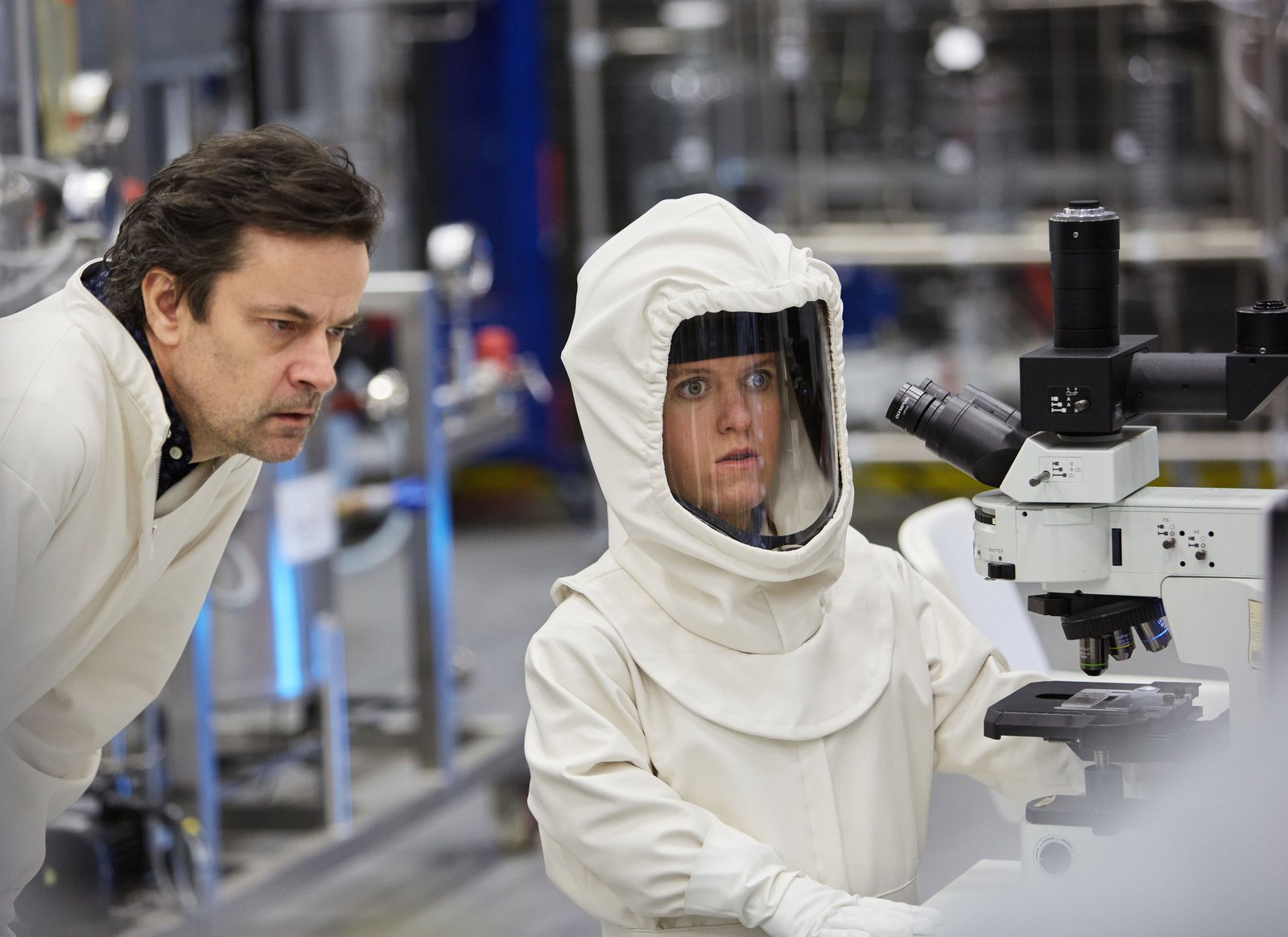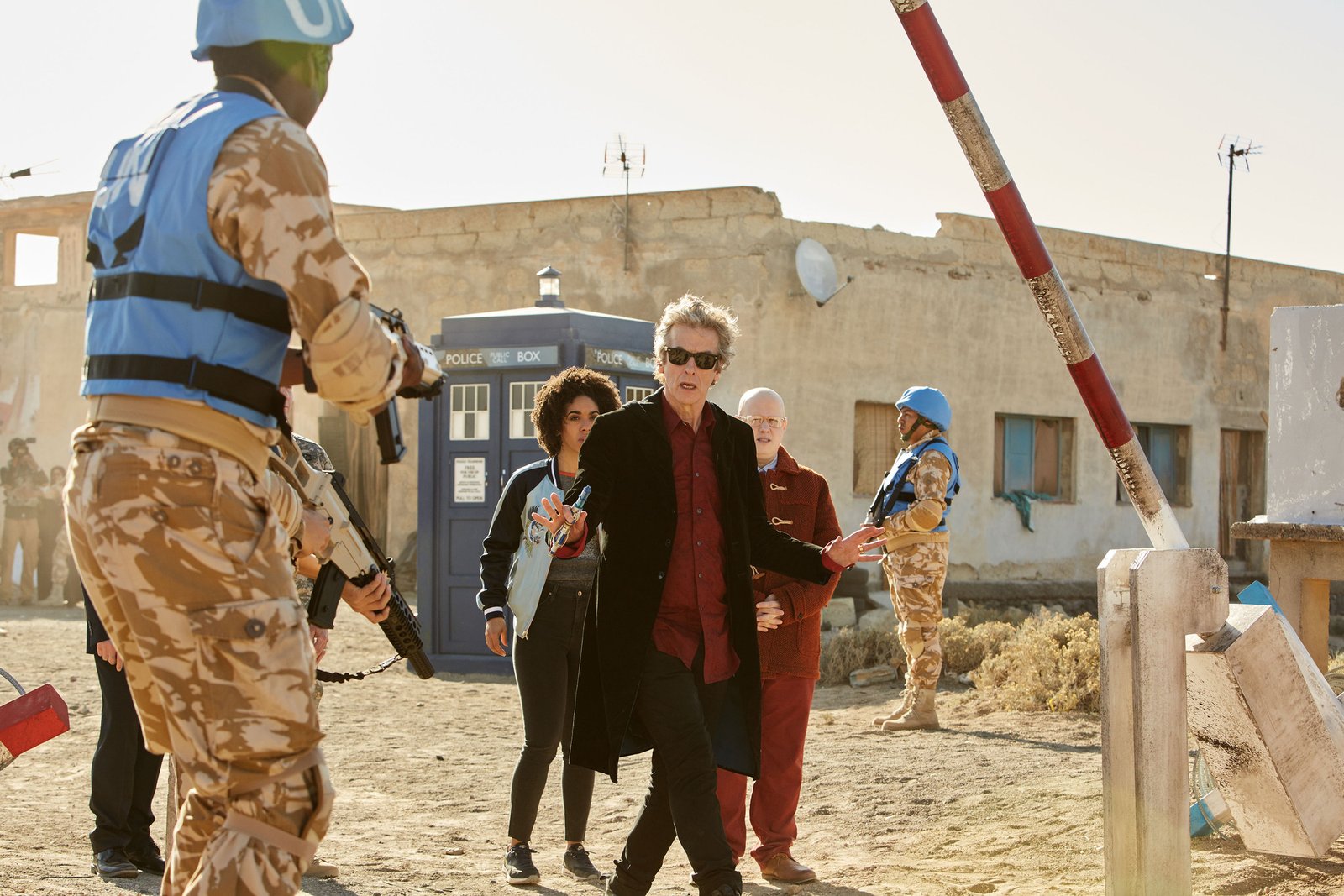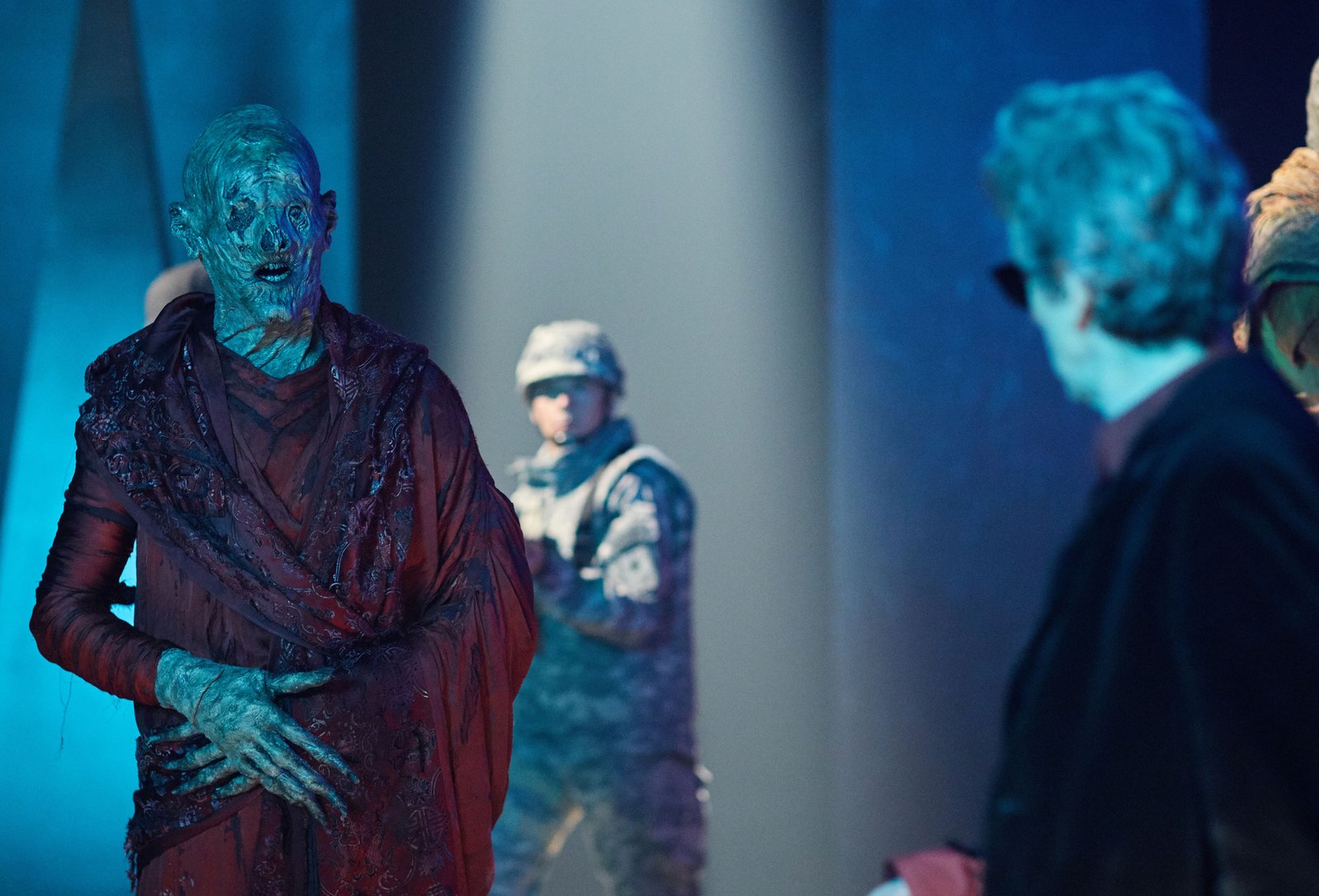Welcome to the DWC Apartments: a luxury development that’s 5,000 years old. Except, the site only appeared yesterday. And our inhabitants are basically robed desiccated corpses. Hey man, don’t judge, okay?
What do we want? WE WANT YOU TO LOVE US. Sorry, no, sorry, calm down. Calm down, DWC, you were like this when you met Shirley Bassey. (Brownie points for correctly identifying where that allusion comes from.)
In Truth, Peter Harness and Steven Moffat wanted us to love The Pyramid at the End of the World, and it seems Richie Forbes did:
“At times, dare I say it, Pyramid feels like the best kind of emulation of Classic Who. Side-plots and developments are established, bit by bit, throughout the course of the episode – a hungover scientist, broken glasses, bacteria in a laboratory, visitors from space, a doomsday clock – dovetailing satisfyingly for a belter of a third act. When the moving parts laid out by the co-authors finally come together, the true nature of the story is revealed: we’re watching the end of civilization as we know it as a chain of small, incidental mistakes, including the Doctor’s.”
But what did the rest of the Doctor Who Companion crew think?
Matt Badham

I enjoyed this one, once it eventually warmed up. The epic nature of the episode (which was all Independence Day and Arrival-like) slowed the action down quite a bit, as the Doctor and his companions spent ages getting to the story. Of course, when they did get there, it turned out that they were in the wrong place after all, in what was a nice bit of misdirection: the ‘end of the world’ was actually going on in a laboratory in England.
The laboratory scenes were the best bits of the episode for me. I enjoyed the banter between the two scientists and I liked the business with the broken glasses, and the on-the-nose way this was foreshadowed, with its implicit commentary about the effect of chance and circumstance on our lives. (What if I had turned left that day instead of right?) I also liked getting to see the Doctor save the day and almost blow himself up. Those sequences felt satisfyingly ‘Doctor-ish’ to me and I much preferred them to the bits where Capaldi got to grandstand as President of the World.
The Monks feel a little underdeveloped at the moment, but perhaps this will change next week. Judging by the ‘Next Time’ trailer, the Doctor and Bill are going to be up against a totalitarian world regime led by the Monks (with the Doctor as a potential collaborator). And Missy is back properly, it seems, so that should be fun.
The Pyramid at the End of the World is the weakest story in this season so far. It says a lot about how strong this season has been, then, that I still enjoyed it and I’m excited to see what happens next.
Philip Bates

Well, I wasn’t expecting that! I approached The Pyramid at the End of the World with some dread, having not made much of Peter Harness’ previous efforts, Kill the Moon and The Zygon Invasion/ The Zygon Inversion, and while Pyramid was far from perfect, it was enjoyable enough with some great ideas and fantastic visuals.
There were plenty of holes, but they’ll continue to niggle for ages. They didn’t stop me enjoying what was on offer.
The thing that did impact on my initial viewing was how predictable it all was. Okay, so I thought Bill would give the Monks consent in order to save the Doctor’s life; what actually happened was she consented to get his sight back in order to save his life. Semantics, right? Still, the march towards the inevitable was good enough, and I’m left questioning whether something being predictable actually makes it bad. It turns out that it doesn’t. Everyone knows how Hamlet ends, but it’s still a fun ride. Well, a good ride at any rate. “Fun” might be stretching it, given all the death.
So there we have it. The Pyramid at the End of the World: a fun, if imperfect and predictable, ride. I’ll take that over Kill the Moon any day.
James Baldock

If anything, The Pyramid at the End of the World suffers from Difficult Second Album Syndrome, or at least second act fatigue. There’s nothing inherently wrong with it, except to say that nothing very much happens. That’s something we’ve got used to this series, but that it’s suddenly a problem is less a hallmark of collective boredom and more the fact that a ponderous narrative like this does not sit well with the alien invasion badge the episode wears at its heart. This is the middle part of a trilogy, a fact that we’re never really allowed to forget.
The basic problem is structure. The sort of personal journey that forms the story’s emotional core works fine when you’re watching a character piece – as we did with, say, The Pilot – but it’s less successful when large chunks of the episode revolve around the Doctor travelling from one place to another, interacting with supporting characters who are presumably baffled as to why they’re having to contend with a cantankerous retired prog rock guitarist, and wondering when the real hero’s going to show up. Far from the dashing, tedious hero we’ve encountered, this is a man who tactically misjudges an elementary problem and is doomed as a result. That needn’t be a bad thing. Stories in which the Doctor blunders into a bad situation and makes it worse can be marvellous. Unfortunately, this week’s wasn’t one of them.
Tony Jones
With vast amounts of the story happening off-stage, and the leading armies of the world represented by three men in a hut, The Pyramid at the End of the World had some nice touches, hung together with not very much at all.

The nearly all-powerful Monks can heal the Doctor’s eyes when he can’t, and do so remotely, yet need to be asked to take over the world. And all this from a random accident that happened just this one time in the world’s least competent bio-research laboratory. Where’s the character development, the sense of real danger? I know not.
Katie Gribble
The Pyramid at the End of the World built on what little Extremis brought to Series 10 and I am now excited to see how this miniature story arc is going to play out. This episode was a real stormer for Bill and I think her decision at the end of the episode was a very brave thing to do. It also showed how much trust she has for this man. It’s nice to see that trust being built up again as it’s been a long time since we’ve had a new companion plunged into this weird and wonderful universe. Bill’s sacrifice, while appearing misjudged, is done in the best of Doctor Who tradition. The companion gives the Doctor an advantage over the enemy, but in this case, the price of that decision has far reaching consequences for the Doctor and the people of Earth.
Here’s to the conclusion of this short story arc and here’s hoping that the dystopian world, seen in the trailers for this week, prove a real challenge for the Doctor and Bill.
A very mixed bag – which is proving a rarity for Series 10! Perhaps we’ll all view The Pyramid at the End of the World differently once we know how The Lie of the Land brings the Monk Trilogy to an end…
